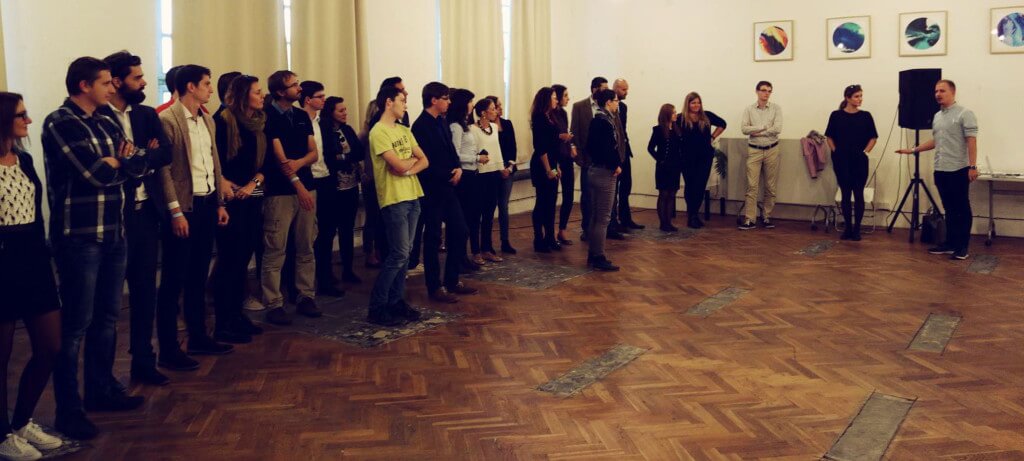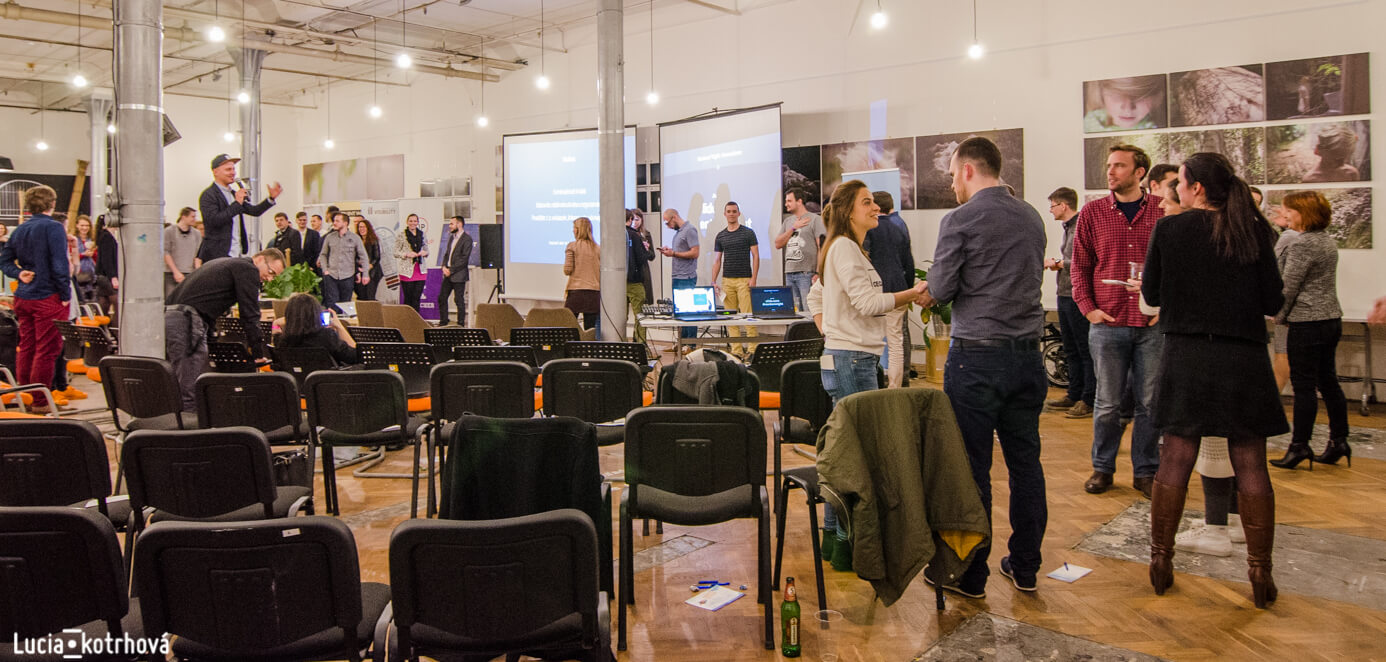I was sitting in the audience waiting for the panel discussion to begin. It was pretty late in the evening and the energy in the room was low. I was dozing off along with the other 150 attendees. The moderator sensed the sleepy ambiance.
He stepped on stage and asked people to stand up and turn to their right.
He continued: “Now please put your hands on the shoulders…” I rolled my eyes. “of the person standing in front of you. And now give him or her a massage.”
150 young people cracked up laughing while massaging each other. Needless to say, the energy level went through the roof. It was a great opening!
While in this particular situation this cheeky icebreaker perfectly served its purpose, it could have been painfully embarrassing with another type of audience.
As you know, the topic of icebreakers is very sensitive and polarizing. If done right, icebreakers can energize people and kick off a session on a high note. If done poorly, they can become a total flop trashing the first impression.
So I scoured the web. I read endless comment threads. And I dusted off my past experience to bring you the icebreaking activities that won’t ridicule your delegates but will help them enjoy your event more deeply.
Here are seven examples.
Rock-paper-scissors
Ever since my colleague, Peter, saw Phil Libin from Evernote opening his presentation with this icebreaker and told me about it, I’ve often used it to open my sessions. It is great. Everyone knows Rock-paper-scissors (RPS), plus it’s culturally sensitive.
This is how you play it.
You announce three elimination rounds and those who remain standing at the end of the third one will win a small prize. As a facilitator, you play RPS against everyone in your audience.
Round 1: You and all attendees simultaneously form one of three shapes as in the original version. Let’s say you play rock. The attendees that played scissors lose and sit down. Those who played paper or rock, meaning they win or have a tie, remain standing. Play two more rounds to find the winners.
In case you play against a bigger crowd (+100), tell those who had a tie to sit down too in order to reduce the number of winners.
After three rounds, you’ll have only a small number of the winners, somewhere between three and seven. I usually give out hard copies of our interaction guide as a prize.
Pick a brain
I first heard about the following two concepts from Bo Kruger, meeting designer and owner of Moving Minds, at the FRESH conference. All credits are his.
The activity starts with presenting a statement or a question and is followed by body voting (for more details, see 5. Live Barometer). Participants place themselves on the imaginary line depending on their level of experience in the introduced topic; the least advanced on the left, the most advanced on the right.
The session leader forms groups of three to four people from among those on the left with the lowest level of experience. In the groups, they need to identify one question that they would like to hear answered from the expert.
Based on the number of formed groups, the facilitator picks up the same number of experts from the right side. He then allocates one expert for each group and has the expert respond to the question asked by each of the groups with less experience and lead a brief discussion.
Name thief
Very rarely do we remember the names of people that we’re introduced to. And that can be pretty embarrassing. This exercise makes attendees listen carefully and actually get familiar with the names in the room.
Have participants walk around the room and start introducing themselves to each other. When two people meet, one takes the name of the other and introduces himself/herself using this name to the next person he/she meets.
This goes on and every couple steals each other’s names and introduces themselves with the new name. Naturally, at the very end, people reveal their real names.
Live barometer

I first experienced this activity at Kristin J. Arnold’s session and used it multiple times ever since.
Live barometer, also called body voting, is a great way to get people moving while also gauging their opinion on the given topic of your session. So you can then build a meaningful discussion. As a presenter, introduce a statement or a question. For instance:
Women are better at presenting than men. (Note: Of course they are!)
Attendees then move physically to the left or right side of the room based on whether they are for or against the argument. On each side, the distance from the center expresses how much they agree or disagree with the given statement.
Then you can elicit a discussion by encouraging people on both sides to share their views and advice. As the debate progresses, you can ask participants if their opinion has changed. They can stay on the same spot, move closer to the center or completely switch sides.
Quizzes
Quizzes are ice-breaking oldies but goldies. Everyone loves a good quiz. The key is to split the audience into smaller groups so people can discuss answers and connect with one another. Based on your audience, you can adapt the topic and length of your quiz.
Mary Roeckel described her quiz adaptation: “It was a quiz that included inspirational leadership quotes. However, to keep it fun and engaging, I threw in a movie character as one of the multiple choice options for each question. The audience was split up into 7 teams and they were allowed to yell out the movie the character was from as they chose an answer to each quote.”
You can collect answers in a traditional way by handing out paper sheets or you can use a polling tool to do it digitally.
Light-speed networking

Personally, I’m a big fan of moderated networking. It gives that often-needed push to help delegates get out of their comfort zone and meet new people. I participated in a variety of speed networking activities and they always worked great. The following variation is by Paula Gurney.
Delegates stand in two lines facing one another; the moderator asks a question (e.g., What is your favorite holiday destination and why? What did you want to become as a kid?), and the two people opposite one another have 30 seconds to introduce themselves and answer the question. Then one line of people moves a place to the left and the same process happens with a different question and two different people.
You can end the session with a question related to the event, such as “What do you want to get out of this conference?” After the last question, delegates have to introduce the person they just met to the rest of the group and say how they answered the question.
Swapping name tags
Networking sessions or events can be petrifying, and not only for introverts. Organizing a simple activity can be an effective catalyst for many attendees to mingle and meet others.
Louise Cote in the Linkedin group shared her experience: “(I) got to a networking event and was given someone else’s name tag! I had to find this man, interview him, and introduce him to the group. It was fun, and I made a new friend!”
In conclusion
Organizing meaningful, yet entertaining, icebreakers is not easy. These seven activities can help you open your sessions or events in an uplifting way. Not only will you raise the energy in the room but you will also help delegates get into the session flow so they can start learning and building new connections faster.
Header photo credits: MinJae Kim licensed under CC-BY 2.0




